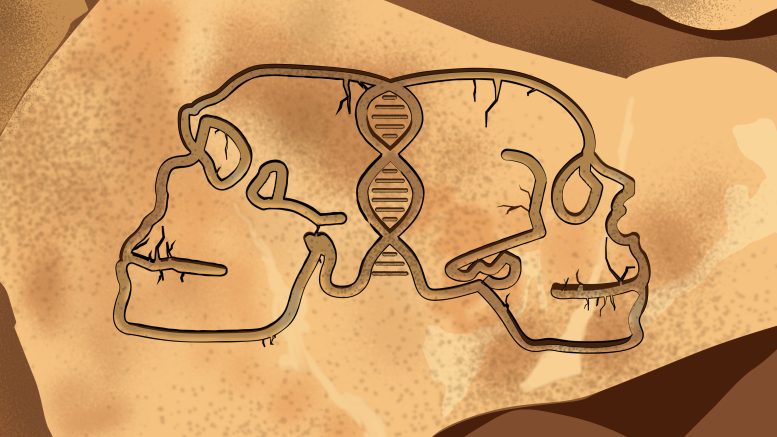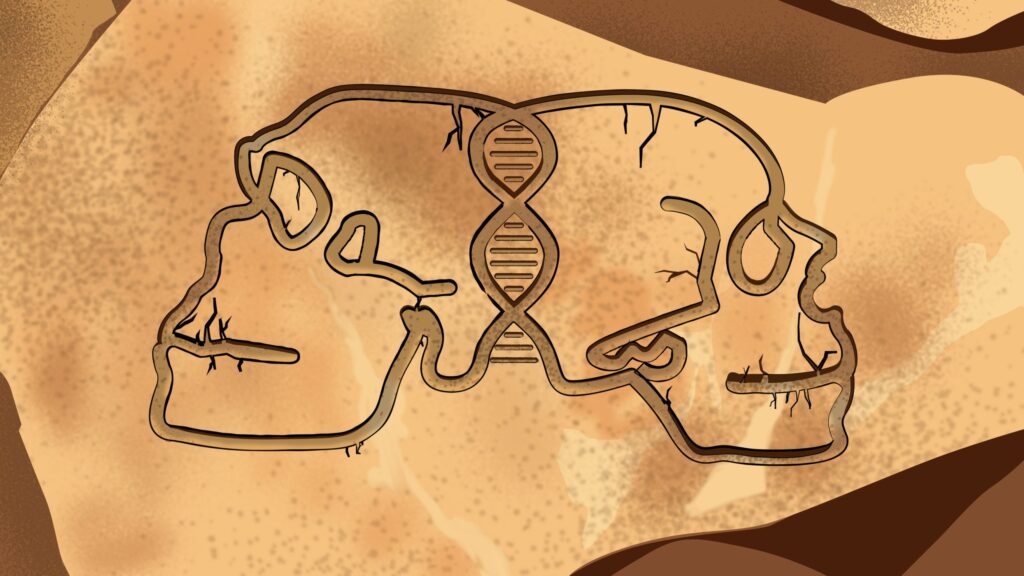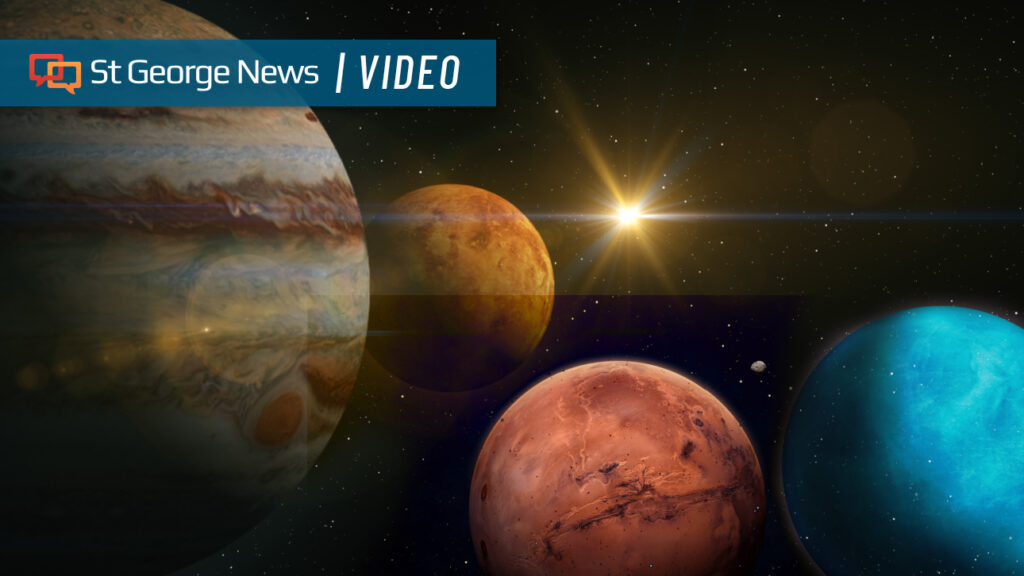
Modern humans have interbred with Neanderthals for more than 200,000 years, reports an international team led by Josh Akey of Princeton University and Liming Li of Southeastern University. Akey and Li identified a first wave of contact around 200–250,000 years ago, another wave around 100–120,000 years ago, and the largest around 50–60,000 years ago. They used a genetic tool called IBDmix that uses AI, rather than a reference population of living humans, to analyze 2,000 living humans, three Neanderthals and one Denisovan. Credit: Matilda Luk, Princeton University
Geneticist Joshua Akey says that modern humans and Neanderthals interacted over a period of 200,000 years.
New genetic research reveals extensive interbreeding and long interactions between Neanderthals, Denisovans and modern humans, suggesting a more integrated history than previously understood and supporting theories of Neanderthal assimilation into modern human populations.
Since the discovery of the first Neanderthal bones in 1856, curiosity about these ancient hominins has grown. How are they different from us? How similar are they to us? Did our ancestors get along with them? Do you fight them? Do they love them? The recent discovery of a group called the Denisovans, a Neanderthal-like group that populated Asia and South Asia, added its own set of questions.
Now, an international team of geneticists and AI experts are adding entirely new chapters to our shared hominin history. Led by Joshua Akey, a professor at Princeton’s Lewis-Sigler Institute for Integrative Genomics, researchers have found a history of genetic mixing and exchange that suggests a much more intimate connection between these early human groups than previously believed.
“This is the first time geneticists have identified multiple waves of modern human-Neanderthal admixture,” said Liming Li, a professor in the Department of Medical Genetics and Developmental Biology at Southeast University in Nanjing, China, who conducted the work as collaborator. research scientist in Akey’s lab.
“We now know that for the vast majority of human history, we’ve had a history of contact between modern humans and Neanderthals,” Akey said. The hominins who are our most direct ancestors split off from the Neanderthal family tree about 600,000 years ago, then evolved our modern physical characteristics about 250,000 years ago.
Continuous interaction over millennia
“Since then, until the Neanderthals went extinct — that is, for about 200,000 years — modern humans have interacted with the Neanderthal population,” he said.
The results of their work appear in the current issue of the magazine science.
Neanderthals, once stereotyped as slow-moving and shrewd, are now seen as skilled hunters and toolmakers who treated each other’s injuries with sophisticated techniques and were well-adapted to thrive in the cold European weather.
(Note: All of these hominin groups are humans, but to avoid saying “Neanderthals,” “Denisovans,” and “ancient versions of our kind of humans,” most archaeologists and anthropologists use the shorthand Neanderthals, Denisovans, and modern humans .)
Using genomes from 2,000 living humans, as well as three Neanderthals and one Denisovan, Akey and his team mapped gene flow between groups of hominins over the past quarter of a million years. The researchers used a genetic tool they designed several years ago called IBDmix, which uses machine learning techniques to decipher the genome. Previous researchers depended on comparing human genomes to a “reference population” of modern humans believed to have little or no Neanderthal or Denisovan ancestry. DNA.
Akey’s team has proven that even those referred groups, who live thousands of miles south of the Neanderthal caves, have trace amounts of Neanderthal DNA, possibly carried south by travelers (or their descendants). With IBDmix, Akey’s team identified a first wave of contact around 200-250,000 years ago, another wave around 100-120,000 years ago, and the largest around 50-60,000 years ago.
Reviewing patterns of human migration
This is in stark contrast to previous genetic data. “To date, most genetic data suggests that modern humans evolved in Africa 250,000 years ago, settled for the next 200,000 years, and then decided to spread out of Africa 50,000 years ago and go to people in the rest of the world,” Akey said.
“Our models show that there wasn’t a long period of stagnation, but that soon after modern humans appeared, we migrated out of Africa and back into Africa as well,” he said. “For me, this story is about dispersal, that modern humans have moved around and encountered Neanderthals and Denisovans much more than we previously recognized.”
This vision of humanity on the move coincides with archaeological and paleoanthropological research that suggests cultural and tool exchange between hominin groups.
Li and Akey’s key breakthrough was to look for modern human DNA in Neanderthal genomes, rather than the other way around. “The vast majority of genetic work over the past decade has really focused on how interbreeding with Neanderthals affected modern human phenotypes and our evolutionary history—but these questions are important and interesting even in reverse,” Akey said.
They realized that the descendants of those first waves of Neanderthal-modern mating must have stayed with the Neanderthals, therefore leaving no trace in living humans. “Because we can now include the Neanderthal component in our genetic studies, we’re looking at these earlier distributions in ways we weren’t able to before,” Akey said. The final piece of the puzzle was the discovery that the Neanderthal population was even smaller than previously believed.
Genetic modeling has traditionally used variation—diversity—as a proxy for population size. The more diverse the genes, the larger the population. But using IBDmix, Akey’s team showed that a significant amount of that apparent diversity came from DNA sequences that had been removed from modern humans, with their much larger population.
As a result, the effective Neanderthal population was revised from about 3,400 individuals to about 2,400.
Taken together, the new findings paint a picture of how Neanderthals disappeared from the record, around 30,000 years ago.
“I don’t like to say ‘extinction,’ because I think Neanderthals drowned a lot,” Akey said. His idea is that the Neanderthal population slowly dwindled until the last survivors folded into modern human communities.
This “assimilation model” was first articulated by Fred Smith, a professor of anthropology at Illinois State University, in 1989. “Our results provide strong genetic evidence consistent with Fred’s hypothesis, and I think that’s really interesting ,” Akey said.
“Neanderthals were on the brink of extinction, probably for a very long time,” he said. “If you reduce their numbers by 10 or 20%, as our estimates do, that’s a significant reduction in an already at-risk population.
“Modern humans were essentially like waves crashing on a beach, slowly but steadily eroding the beach. Eventually, we simply drowned out the Neanderthals demographically and incorporated them into modern human populations.”
Reference: “Recurrent gene flow between Neanderthals and modern humans over the past 200,000 years” by Liming Li, Troy J. Comi, Rob F. Bierman and Joshua M. Akey, 12 July 2024, science.
DOI: 10.1126/science.adi1768
This research was supported by National Institutes of Health (grant R01GM110068 to JMA).


